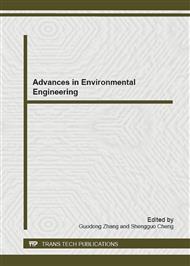p.81
p.86
p.91
p.96
p.100
p.104
p.108
p.114
p.118
Seasonal Variations of Heavy Metals in the Bivalve’s mollusks from Ta-Peng Bay Lagoon in Southwestern Taiwan
Abstract:
Ta-Peng Bay lagoon in southwestern coast of Taiwan belonging to a shallow, productive, coastal lagoon was heavily polluted by the effluent of agriculture from fisheries and domestic sewage. This area provided a plentiful bivalves mollusks for regional market, including Anadara antiquate, Katelysia hiantina, Perna viridis and Anomalocardia squamosa. For understanding correlation between heavy metals existed in aquatic product and variation of heavy metal varied with season, during Dec., 2005- Sep., 2006, six heavy metals, such as Cu, Zn, Pb, Ni, Cr and Cd were analyzed by an air-acetylene flame / Graphite Atomizer atomic absorption spectrophotometer. The variations of different heavy metals existed in aquatic product in season were evaluated using multivariate analysis. Results show that the mean concentration of heavy metal in soft tissues for six aquatic products, Cd species had the lowest value than the others, and Cu and Zn were significantly higher than the other elements. The relationships of all heavy metal species in seasonal variations showed significant dependence. High concentrations of heavy metals were observed in winter. The negative correlation coefficient (p < 0.05) between heavy metals content and season variations statistically revealed decreased with season series for Ni, Pb, and Cr. An interesting finding that Cd bioaccumulation among the species had a significant discrepancy was observed. It means that bivalves mollusks could be develped as a potetial tool for monitoring Cd species.
Info:
Periodical:
Pages:
100-103
Citation:
Online since:
November 2012
Authors:
Keywords:
Price:
Сopyright:
© 2012 Trans Tech Publications Ltd. All Rights Reserved
Share:
Citation:


